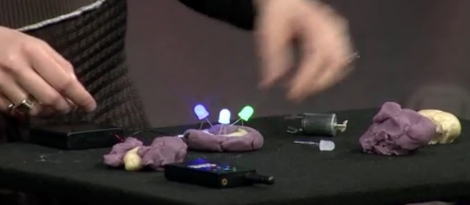
[Mike] has just put a new spin on LED throwies — turning innocent statues into scary possessed demons of the night. He calls them Statueyes, and while it’s not quite vandalism, you might still cause a public disturbance.
If you’re not familiar, magnetic LEDs throwies are a fun little way to add some light to the city at night. They’re a little bit wasteful (sometimes you can’t retrieve them), but so cheap to make it’s sometimes worth it. Depending on what you’re using them for they can open up a whole world of possibilities — like this location tracking augmented reality using IR LED throwies!
Anyway, the main difference with [Mike’s] take on the project is he’s using home-made play-dough which allows him to stick these creepy eyes on non-metallic statues. The Play-Doh in question has an interesting ingredients list: flour, water, salt, vegetable oil and… cream of tartar? It’s the classic edible Play-Doh recipe, but to the unfamiliar it certainly sounds odd.
How cheap do you think we could make these with a simple dimming circuit? Imagine seeing a statues eyes light up as you’re walking by…












